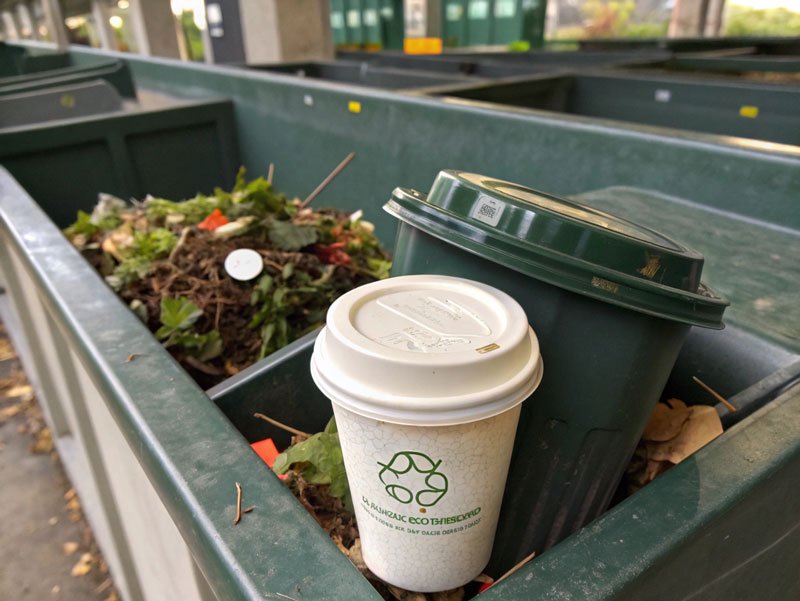Every minute, a garbage truck's worth of plastic enters our oceans. As this crisis grows, many turn to PLA as a sustainable alternative. But does this plant-based plastic truly deliver on its green promises?
PLA (polylactic acid) is more eco-friendly than traditional plastics when properly composted, but its environmental benefits depend entirely on correct disposal methods and infrastructure availability. Unlike petroleum-based plastics, PLA comes from renewable resources like corn starch, yet it shares similar limitations in waste management.
The plastic pollution crisis demands solutions, but we must examine alternatives critically. Let's explore PLA's real environmental impact beyond the marketing claims.
 plastic pollution crisis demands solutions
plastic pollution crisis demands solutions
What Is PLA? Sugar-Based Plastic Explained
Ever opened a "compostable" food container wondering what magic material makes it different? That's likely PLA at work.
PLA is a bioplastic made by fermenting plant sugars (usually from corn or sugarcane) into lactic acid, then polymerizing it into plastic-like material. Unlike conventional plastics derived from fossil fuels, PLA begins as crops absorbing CO₂ from the atmosphere. Common applications include:
- Food packaging
- Disposable cutlery
- 3D printer filament
- Agricultural mulch films
The PLA Production Process: From Field to Factory
Understanding how corn becomes plastic reveals both opportunities and challenges:
- Feedstock Cultivation
- Requires significant agricultural land
- May involve pesticides/fertilizers
- Competes with food production in some regions
- Fermentation & Polymerization
- Starch extraction from plants
- Microorganisms convert sugars to lactic acid
- Chemical processing creates long polymer chains
- Manufacturing Applications
- Melt-processed like traditional plastics
- Lower melting point limits high-heat uses
| Production Stage | Environmental Consideration |
|---|---|
| Farming | Land use, pesticide runoff |
| Processing | Energy-intensive fermentation |
| Transportation | Emissions from crop-to-factory logistics |
 PLA coffee cup lid
PLA coffee cup lid
PLA's Green Advantages: Where It Outshines Regular Plastic
When placed in a composting bin, that PLA coffee cup lid won't linger for centuries like its plastic counterpart. But the full picture requires deeper examination.
PLA's primary environmental benefits include being made from renewable plants instead of oil and having 60-70% lower carbon emissions during production compared to PET plastic. Scientific studies confirm these advantages when proper disposal infrastructure exists
Breaking Down PLA's Eco-Credentials
- Renewable Origins
- Made from annually harvestable crops
- Plants sequester CO₂ while growing
- Reduces fossil fuel dependence
- Industrial Compostability
- Decomposes in 3-6 months at 140°F
- Requires specific microbial activity
- ASTM D6400 certified products meet standards
- Non-Toxic Breakdown
- Degrades into lactic acid
- No microplastic persistence
- Safe for compost used in agriculture
"While conducting factory audits in China, I've witnessed how PLA production utilizes agricultural byproducts that would otherwise go to waste," shares a sustainability consultant familiar with bioplastic manufacturing. This highlights untapped potential in circular systems.
The Hidden Challenges: Why PLA Isn't a Perfect Solution
That "compostable" label on PLA products gives many consumers false confidence. The reality involves complex infrastructure most cities lack.
PLA only decomposes properly in industrial composting facilities that maintain temperatures above 140°F - conditions absent in home compost piles, landfills, or marine environments. When improperly discarded, PLA behaves similarly to conventional plastics.

Critical Limitations Every Buyer Should Know
- Disposal Reality Check
- 95% of US/UK communities lack PLA composting access
- Misleads well-intentioned consumers
- Often ends up contaminating recycling streams
- Agricultural Drawbacks
- GMO corn dominates feedstock supply
- Heavy water/fertilizer requirements
- Potential deforestation for crop expansion
- Performance Trade-Offs
- Lower heat tolerance than petroleum plastics
- Barrier properties may require chemical treatments
- Shorter shelf-life for packaging applications
A compost facility operator in Australia explains: "We reject nearly 40% of supposedly compostable packaging because misleading labels confuse consumers." This waste management gap undermines PLA's potential.
Conclusion
PLA offers meaningful environmental benefits over conventional plastics when produced responsibly and composted correctly, but current infrastructure limitations and disposal behaviors prevent it from being a perfect solution. The most sustainable choice depends on your local waste systems and willingness to ensure proper end-of-life handling.





